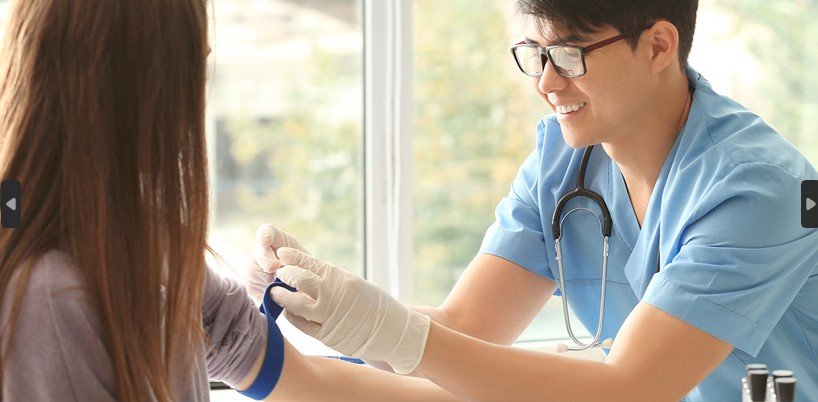Disadvantages of Syringe Method in Venipuncture: Risks and Preventive Measures
Summary
- Potential risk of accidental needle injury to healthcare workers
- Potential for patient discomfort and anxiety
- Potential for contamination and infection
Introduction
Venipuncture is a common procedure in healthcare settings, especially in clinical labs and hospitals, where blood samples are collected for diagnostic purposes. While there are different methods used for Venipuncture, the syringe method is one of the traditional techniques that is still commonly used today. However, there are several disadvantages associated with the syringe method that Healthcare Providers and patients should be aware of.
Potential risk of accidental needle injury to healthcare workers
One of the main disadvantages of using the syringe method in Venipuncture is the potential risk of accidental needle injury to healthcare workers. When using a syringe to draw blood, there is a higher chance of needle sticks and sharps injuries compared to other Venipuncture techniques. This can pose a significant risk to healthcare professionals, as needle injuries can lead to the transmission of bloodborne pathogens such as HIV and hepatitis B and C.
Preventive measures
To minimize the risk of needle injuries when using the syringe method, Healthcare Providers should always follow proper safety protocols, such as using safety-engineered devices, wearing appropriate personal protective equipment, and undergoing regular training on safe Venipuncture practices. It is also important to properly dispose of used needles and sharps in designated sharps containers to prevent accidental injuries.
Potential for patient discomfort and anxiety
Another disadvantage of the syringe method in Venipuncture is the potential for patient discomfort and anxiety. The use of a syringe to draw blood can be more painful and traumatic for some patients compared to other Venipuncture techniques, such as using a vacuum tube system or butterfly needle. This can lead to increased levels of anxiety and fear in patients, especially those who have a fear of needles or a low pain tolerance.
Minimizing patient discomfort
To minimize patient discomfort and anxiety when using the syringe method for Venipuncture, Healthcare Providers should ensure that the procedure is performed quickly and efficiently. They should also communicate openly with patients about the process and provide emotional support and reassurance. Using distraction techniques, such as talking to the patient or playing calming music, can also help alleviate anxiety during the procedure.
Potential for contamination and infection
In addition to the risk of accidental needle injuries and patient discomfort, the syringe method in Venipuncture also carries the potential for contamination and infection. When using a syringe to draw blood, there is a higher risk of contamination compared to other Venipuncture techniques, as the needle is manually inserted and removed from the vein, increasing the likelihood of bacterial or microbial entry into the bloodstream.
Preventive measures
To reduce the risk of contamination and infection when using the syringe method, Healthcare Providers should ensure that they follow strict aseptic techniques during the procedure. This includes properly disinfecting the skin before Venipuncture, using sterile equipment and supplies, and maintaining a clean and organized work environment. Healthcare Providers should also be trained on proper infection control practices to prevent the spread of infections in clinical settings.
Conclusion
While the syringe method is a traditional technique that is still widely used in Venipuncture, it is important for Healthcare Providers to be aware of the disadvantages associated with this method. By taking preventive measures to reduce the risk of needle injuries, patient discomfort, and contamination, healthcare professionals can ensure safe and effective blood collection for diagnostic purposes.

Disclaimer: The content provided on this blog is for informational purposes only, reflecting the personal opinions and insights of the author(s) on the topics. The information provided should not be used for diagnosing or treating a health problem or disease, and those seeking personal medical advice should consult with a licensed physician. Always seek the advice of your doctor or other qualified health provider regarding a medical condition. Never disregard professional medical advice or delay in seeking it because of something you have read on this website. If you think you may have a medical emergency, call 911 or go to the nearest emergency room immediately. No physician-patient relationship is created by this web site or its use. No contributors to this web site make any representations, express or implied, with respect to the information provided herein or to its use. While we strive to share accurate and up-to-date information, we cannot guarantee the completeness, reliability, or accuracy of the content. The blog may also include links to external websites and resources for the convenience of our readers. Please note that linking to other sites does not imply endorsement of their content, practices, or services by us. Readers should use their discretion and judgment while exploring any external links and resources mentioned on this blog.
